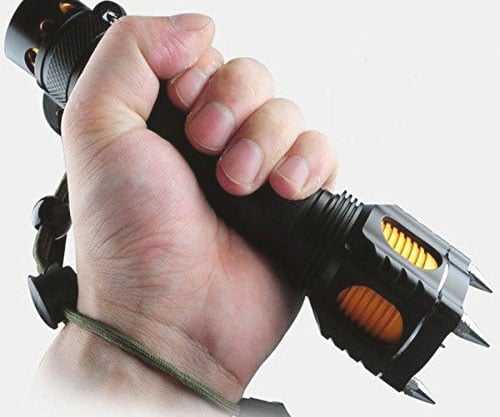
The Psychology of Self Defense is a guide for self defense. It will show you how to deal with any situation. It will help you to identify and de-escalate conflicts. The book includes tips for de-escalation, which are: Principle of Reasonableness, Principle of Imminence, Principle of Self-affirmation, and Principle of Fear.
Principle of Reasonableness
The Principle of Reasonableness must be applied when fighting back in self defense. Your attacker's harm must be balanced against your reasonable actions. If someone has a firearm, it's not possible to say that you didn’t notice the gun. A rational person would not make this mistake and instead would seek out a less violent solution.
Principle of imminence
The Principle Of Imminence is a criteria for when to use force for self-defence. This applies when you have a high probability of being unable to defend yourself effectively due to a delayed response. Imminence is closely related to the requirement of necessity, so it should be applied with care and with particular circumstances in each case.
Principle of self-affirmation
An important strategy for self defense is self-affirmation. This strategy involves affirming one’s personal values and beliefs. This strategy can reduce the probability of being attacked by a threat in a hostile situation. This technique is also effective for self-esteem and relationship-building.
Principle of Fear
The Principle Of Fear in Self-Defense can be considered a legal principle that regulates self defense in certain situations. This doctrine applies when an agent feels that there is no way out. Insurmountable Fear is a psychological condition that is connected to the need for one to save oneself.
Principle of Possession
The Principle for Possession in self Defense is a legal theory stating that an individual has the right to defend themselves when being attacked by another. A violation of this principle is an infringement of the individual's autonomy. This law does NOT protect anyone from being attacked or beaten by a stranger. However, it does protect those who have been involved in criminal conduct. The Roman Law principle based this principle on dominium (personal attack on a male head of the family) which states that an attack on someone is an attack on him as the Roman Law principle governing dominium.
Principle of Aggression
For self-defense, it is essential to know the Principles of Aggression. In its simplest form, the principle states aggression as a method of initiating violence. However, self-defense is not always possible when violence is initiated. Furthermore, it is implied that anyone who is violent cannot be expected to respect other people's rights.
FAQ
How long does it usually take to recharge a stungun?
This can vary depending on what type of battery you have.
For example, AA batteries may take 2 hours to recharge while AAA batteries may take 8 hours.
Can I be arrested for using my stun guns?
No. Stun guns may be considered "less fatal" weapons. They cannot inflict serious injury and are therefore considered less deadly.
However, charges could still be brought against you if you accidentally hit anyone with your stungun.
Do stun guns hurt people?
It's not true. The stun gun injects a tiny amount of current into the skin.
This does not cause permanent damage.
Statistics
- Kung Fu alone has 400 unique martial art styles – and whilst you likely won't be able to find a school for each form, many other martial arts are completely different altogether. (budodragon.com)
- Most likely, you'll get tapped out by 90% of the people in your first 3-5 months. (mmaclan.com)
- Boxers aren't allowed to fight in a clinch, which is a position that occurs in 80% of the streetfights. (mmaclan.com)
- Most likely, the person will want some kind of boxing match, so if you can out-box them, this would be 100% ideal for survival. (budodragon.com)
External Links
How To
How to use Kubotans for self-defense
Kubotan are small sticks that were used by Okinawan martial art masters as weapons. They were originally made of bamboo but have since been replaced by metals and plastic.
They can be found between 5cm and 2.5cm in height.
The Kubotan is designed for striking at an opponent's eyes and nose. It can also be used against other body parts, such as elbows or knees.
Women often use Kubotan because they are easy to carry, lightweight, and can easily be concealed when not needed.
Knowing where to place your Kubotan to strike the correct spot is essential to be able to effectively use it.
Also, practice using the Kubotan to ensure you hit the right spots.
These steps will show you how to use the Kubotan for self-defense.
-
Face the attacker
-
Hold the Kubotan tightly between your index and thumb.
-
Raise the arm holding the Kubotan above your head.
-
Move the Kubotan towards the attacker by lowering it.
-
On the nose, eye, or area of the mouth, strike the attacker.
-
As it hits the target, the Kubotan should be visible.
-
Keep swinging the Kubotan up and down until you hear a "thwack".
-
Reduce the Kubotan, and then step back.
-
Continue fighting, follow Steps 1-7.